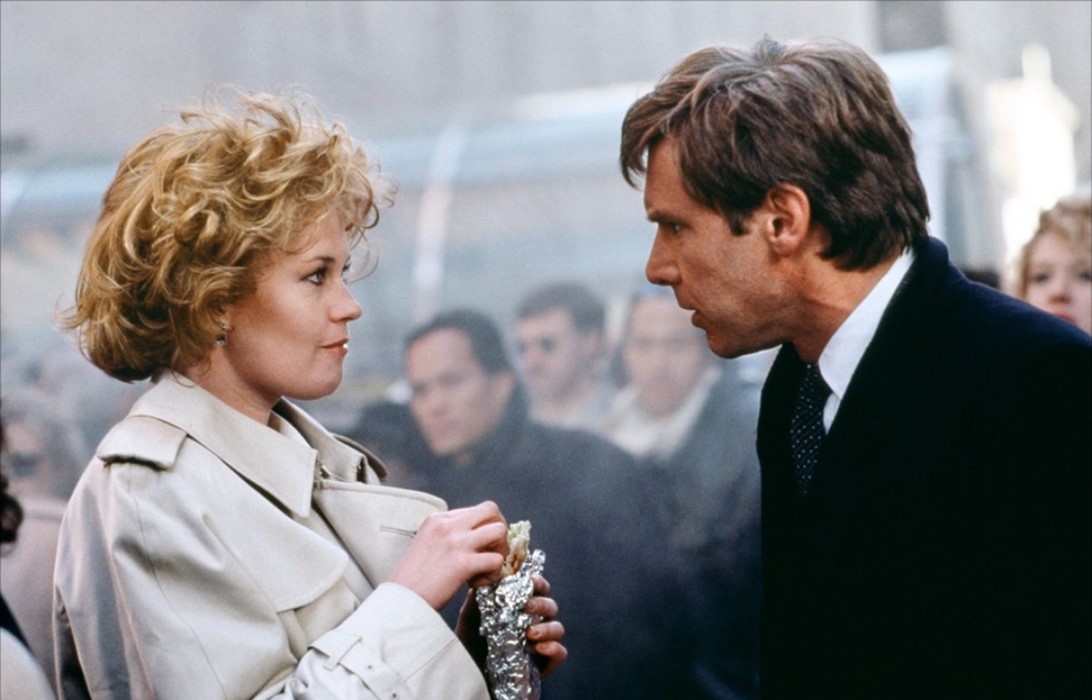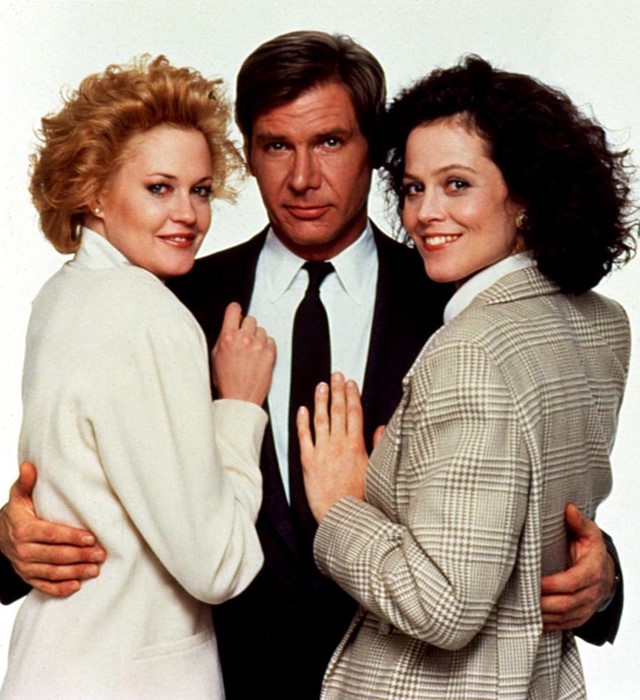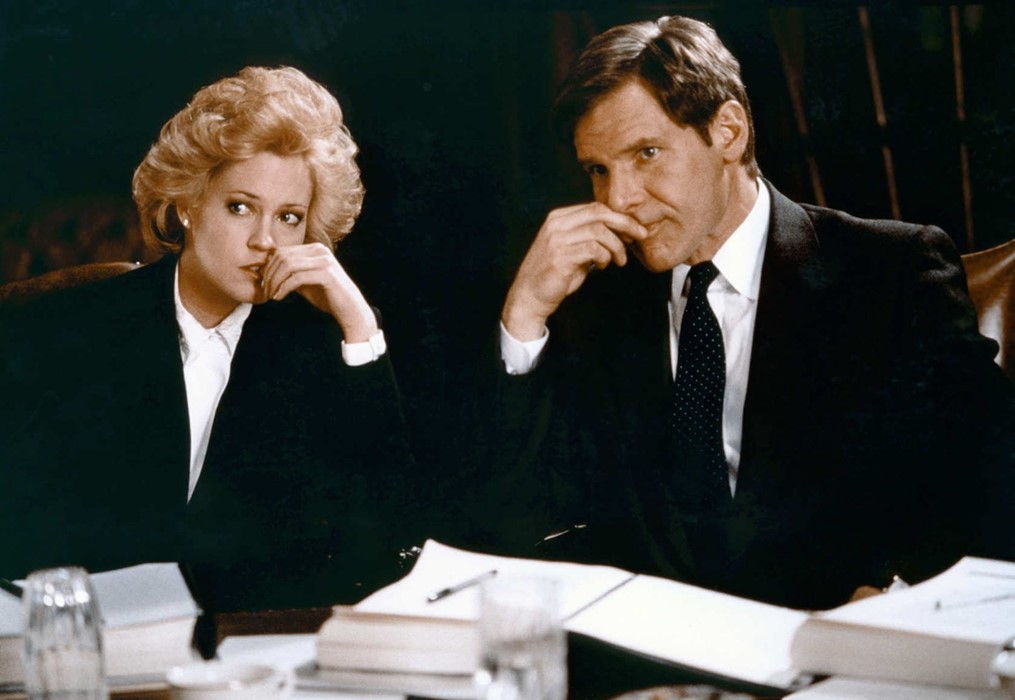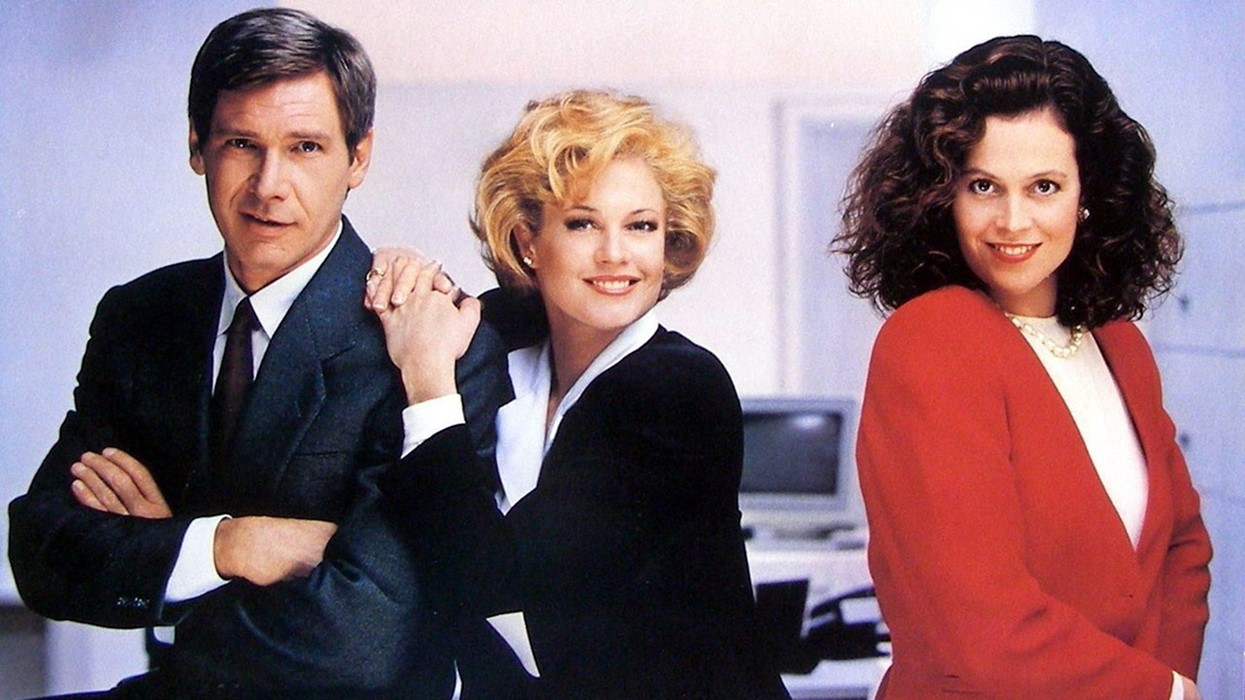As themes of power dressing crop up in A/W16 collections from Gareth Pugh to Balenciaga, we consider the key tenements of the 1980s ode to workwear
The 1980s saw a gender role revolution in the workplace. With historical strides towards male and female equality came a surge of women working in office jobs, and a new, sharply tailored uniform quickly emerged – one which women utilised to assert their authority through exaggerated proportions, arresting colours and unapologetically strong silhouettes. Riffing on classical male suiting, this uniform comprised of boxy tailored jackets with padded shoulders and knee-length skirts. It quickly came to be known as ‘power dressing’. “It reeked of money, it suggested exclusivity,” Wall Street Journal critic Teri Agins said of the era-defining aesthetic. “It was something women could wear in a boardroom and still be respected.”
One film which eloquently captures the spirit of this age is Mike Nichols’ Working Girl (1988), a rom-com which follows the story of Staten Island ‘local girl’ Tess McGill, played by a young and ebullient Melanie Griffiths, as she learns to harness the power of clothing to establish her professional presence within the workplace. Now, 27 years after Working Girl’s release, the era of the power suit has long passed, but the sartorial language which surrounded the film's release is as pre-eminent as ever. In fact, it was a prevailing theme during the A/W16 shows: At Balenciaga, Demna Gvasalia dubbed the grey two-button blazer and matching pencil skirt that opened the show as the “power look”, while Gareth Pugh coined his own collection as “an exploration of codes of power, of women with the real power.” In light of its reappearance, AnOther reflects on Nichols’ six-time-Oscar-nominated film to chart the changes which mark Tess’s transformation from Staten Island secretary to Wall Street wonderwoman.

1. If you want to grow, find someone to copy
In this corporate Cinderella story, Katharine Parker, played by Sigourney Weaver, appears to be something of a fairy godmother to protagonist Tess: she bestows her young protégé with advice on everything from brushing off her male colleagues’ sexual advances (“Never burn bridges,” she states emphatically. “Today’s junior prick, tomorrow’s senior partner”) to her attire (“You might want to rethink your jewellery”). Under Katharine’s influence, Tess transitions from flashy and slightly trashy, to “simple, elegant and impeccable”, demonstrating the positive effects a role model can have on your professional and sartorial development. A word of warning, though – don’t place all your hopes on said role model. Like Katharine, he or she might turn out to be a conniving, idea-thieving bitch.
2. Fashion isn’t a hobby, it’s a full-time job
“Dress shabbily, they notice the dress. Dress impeccably, they notice the woman,” Katharine advises, quoting the immortal words of Coco Chanel while dressed in an elegant grey suit. Described by The Washington Post as “fit to fill Joan Crawford's shoulder pads”, she teaches Tess that dressing well isn’t a superficial activity, but a vital element of professionalism. Her wardrobe, she informs Tess, tells people that she’s “confident, a risk-taker and unafraid to be noticed”. With such advice in mind, spending copious amounts of money on one’s wardrobe can no longer be classed as extravagance, but as a legitimate investment in one’s career – spend lavishly, choose wisely and wait for the promotions to roll in.

3. If you’re serious about your job, show it with your hair
Tess understood that when it comes to self-presentation, one’s cheveux is not exempt from the politics of power. “You wanna be taken seriously, you need serious hair,” Tess says to her friend Cynthia, handing her some scissors to cut her mop of gravity-defying hair into something more sensible. It’s a rule Gareth Pugh is well-versed in, too – in his bid to transform his models into “women you really don’t want to cross”, he had their hair woven into elaborate sausage-rolled chignons in the image of the first ladies of yesteryear. Similarly, at Balenciaga, models walked down the runway with their tresses combed into strict centre partings and smoothed into slick submission. Like clothes, hair has the power to communicate – harness that power.
4. Sensuality is a powerful corporate weapon
Though 80s power dressing took its cues from the male wardrobe, it wasn’t long before corporate uniform ceased to emulate masculine silhouettes. Recognising the potential of the female form to elevate her status in the company, Tess takes on a powerful, feminine and, to a certain extent, sensual identity. "I've got a head for business and a bod for sin, is there anything wrong with that?" she asks provocatively, clad in one of Katharine’s $6,000 cocktail dresses. What’s more, Tess is pioneering in her ability to master corporate attire without compromising her femininity or her sex appeal – and she’s thoroughly unapologetic about the fact. “You're the first woman I've seen at one of these things that dresses like a woman, not like a woman thinks a man would dress if he was a woman,” investment broker Jack Trainer notes, impressed.

5. Just do you
Tess is defined by her unflinching independence throughout Working Girl. "I'm not going to spend the rest of my life working my ass off and getting nowhere just because I followed rules that I had nothing to do with setting up,” she says, marking her refusal to bend to societal gender norms. It’s this attitude that also leads her to tell Katharine to “get her bony ass out of here” and craft her own take on boardroom chic, which is more feminine than her boss’s. Tess does things her own way – much like Pugh’s Hannibal Lecter masked power bitches – and doubtless we could all learn a thing or two from her uncompromising approach.
